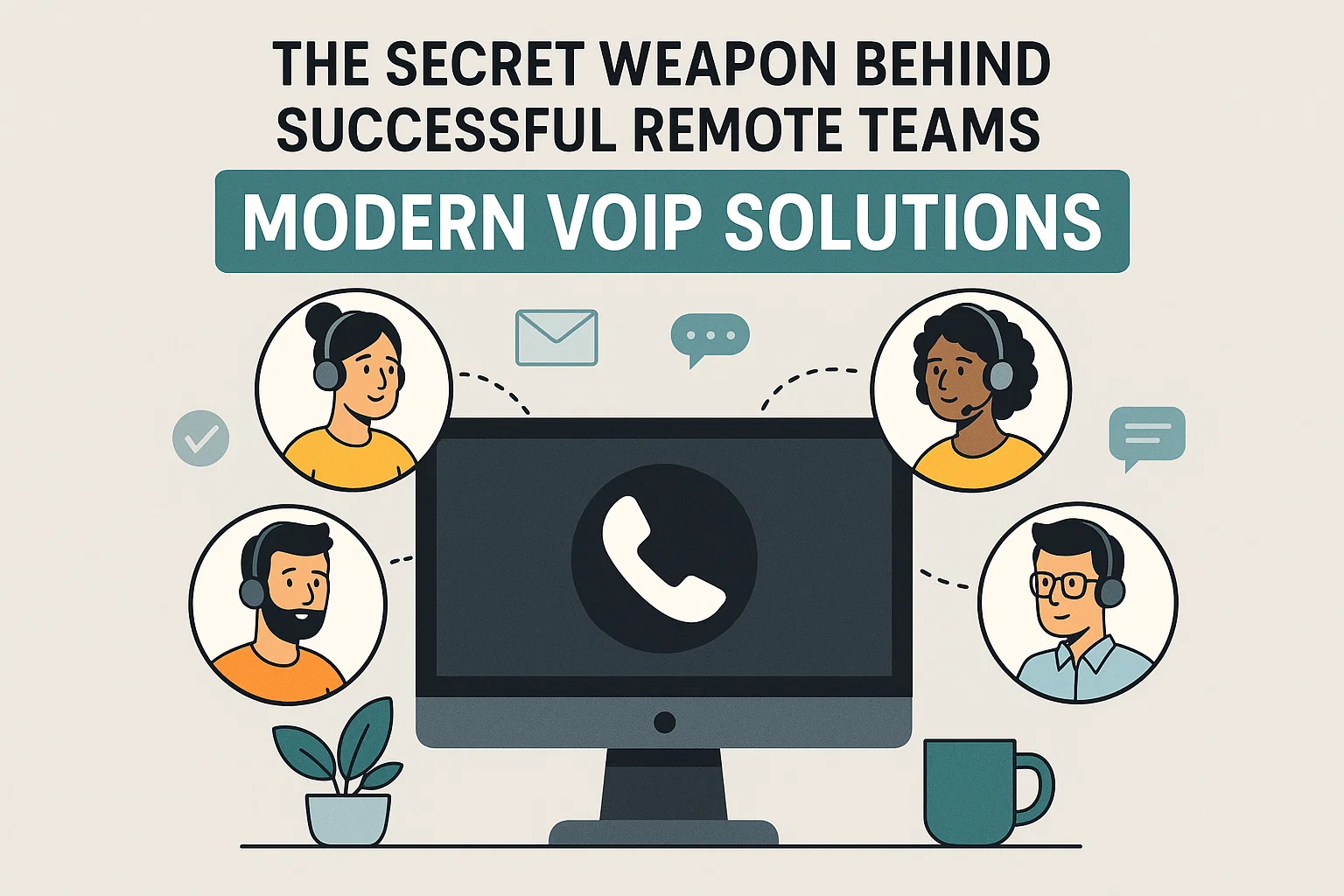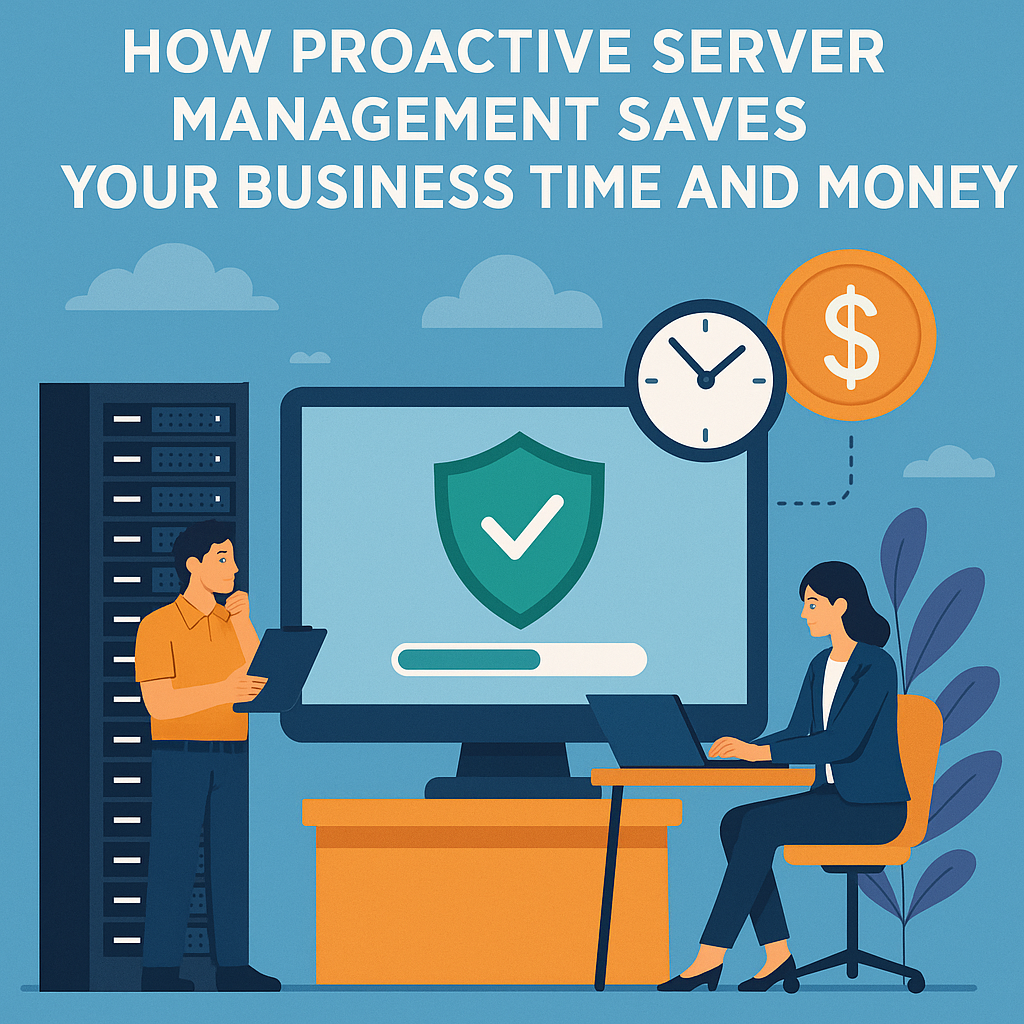The Secret Weapon Behind Successful Remote Teams: Modern VOIP Solutions

The landscape of work has transformed dramatically. Gone are the days when communication meant being tethered to a desk phone in a corporate office. Today’s professionals collaborate from coffee shops, home offices, and coworking spaces across the globe—and they’re staying connected through Voice over Internet Protocol technology.
Why Traditional Phone Systems Can’t Keep Up
Remember the clunky office phone systems of the past? Those expensive hardware installations that required IT specialists just to add a new extension? They’ve become relics in our increasingly flexible work environment.
Traditional telephony infrastructure simply wasn’t designed for a workforce that moves between locations throughout the day. When your sales rep is closing deals from a beach in Bali and your customer service team spans three time zones, you need communication tools that transcend physical boundaries.
The VOIP Advantage for Distributed Teams
Voice over Internet Protocol technology fundamentally reimagines business communication. Instead of relying on copper wires and physical phone lines, VOIP converts voice into digital data packets that travel across the internet. This seemingly simple shift unlocks extraordinary possibilities.
Seamless Connectivity Anywhere
With VOIP, your business phone number follows you. Whether you’re answering calls on your laptop, smartphone, or tablet, clients experience consistent professional communication. That same extension that rings at your desk can simultaneously alert your mobile device when you’re meeting with clients across town.
Cost Efficiency That Makes CFOs Smile
Traditional phone systems drain budgets through installation costs, maintenance fees, and long-distance charges. VOIP eliminates most of these expenses. International calls that once cost dollars per minute now consume minimal bandwidth. Companies report saving 30-50% on communication costs after making the switch.
Scalability Without the Headaches
Growing teams need flexible solutions. Adding a new employee to a VOIP system takes minutes, not days of technical installation. Downsizing doesn’t leave you paying for unused lines. The infrastructure scales perfectly with your actual needs, whether you’re expanding rapidly or adjusting to seasonal fluctuations.
Features That Transform Daily Operations
Modern VOIP platforms deliver far more than basic calling capabilities. They’ve evolved into comprehensive communication ecosystems.
Intelligent Call Routing: Incoming calls automatically reach the right person based on customizable rules. Customer calls can route to available agents, while partner calls go directly to account managers—even when everyone’s working from different locations.
Visual voicemail converts voice messages into readable text, delivering them directly as emails or message-style transcripts. Your team can scan messages in seconds and prioritize responses accordingly, turning previously time-consuming voicemail checking into an efficient task.
Integration With Business Tools: Leading VOIP systems connect seamlessly with CRM platforms, project management software, and collaboration tools. Call logs automatically populate customer records. Click-to-dial functionality turns every phone number into an actionable link.
Video Conferencing Built In: Many VOIP solutions now incorporate video capabilities, eliminating the need for separate platforms. Host client presentations, team meetings, and training sessions through a unified interface.
Supporting the Hybrid Work Reality
Hybrid arrangements present unique challenges. Some team members work from headquarters on Tuesdays and Thursdays while others rarely visit the office. VOIP creates consistency across these varying situations.
Employees maintain professional presence regardless of location. That hot-desking arrangement in your downtown office? This isn’t an issue when your phone number isn’t locked to a physical desk. Team members can log into any device and instantly access their full communication setup.
Security Considerations Matter
Moving business communications online raises legitimate security questions. Reputable VOIP providers address these concerns through encryption, secure data centers, and compliance with industry regulations.
End-to-end encryption protects sensitive conversations from interception. Multi-factor authentication prevents unauthorized account access. Regular security updates defend against emerging threats. For businesses in regulated industries, many providers offer HIPAA-compliant or PCI-DSS certified solutions.
The Technical Foundation: What You Need
Implementing VOIP doesn’t require massive infrastructure investments, but success does depend on certain fundamentals.
Reliable Internet Connection: VOIP quality directly correlates with internet stability. Most providers recommend at least 100 kbps of bandwidth per concurrent call. For video functionality, requirements increase substantially.
Quality Hardware Options: While VOIP works with standard computers and smartphones, dedicated IP phones offer superior audio quality and user experience. Wireless headsets free employees to move around during calls.
Network Prioritization: Configuring Quality of Service settings on your router ensures voice traffic receives priority over less time-sensitive data, preventing choppy calls when someone downloads large files.
Real-World Impact Stories
Consider the accounting firm that shifted to fully remote operations during recent years. Their VOIP system meant clients never experienced disruption—incoming calls reached accountants at home just as they would have in the office. The firm actually expanded its service area since physical location became irrelevant.
Or the tech startup that launched with a distributed team from day one. VOIP allowed them to hire top talent regardless of geography while projecting a unified professional image through a single business number and consistent call handling.
Choosing the Right Solution
The VOIP market offers countless options, from budget-friendly basic services to enterprise-grade platforms with extensive features. Evaluating providers requires considering several factors.
Uptime Guarantees: Look for providers offering 99.9% or better uptime commitments backed by service level agreements.
Customer Support Quality: When communication systems fail, you need responsive help. Research provider support reputation and availability.
Feature Alignment: Don’t pay for advanced capabilities you won’t use, but ensure core functionalities match your workflow requirements.
Integration Ecosystem: Verify compatibility with your existing business software stack.
Implementation Best Practices
Successful VOIP adoption involves more than signing a contract. Strategic implementation ensures smooth transitions.
Start with a pilot program involving a small team before full deployment.This helps uncover possible problems within a safe, test-ready environment. Train employees thoroughly on features they’ll actually use—elaborate capabilities provide no value if staff don’t understand them.
Establish clear communication protocols for your hybrid environment. When should team members use phone versus video versus messaging? Consistency prevents confusion and missed communications.
The Future of Business Communication
VOIP technology continues advancing rapidly. Artificial intelligence now powers features like real-time translation for international calls, sentiment analysis that alerts managers to customer frustration, and predictive routing that connects callers with the most appropriate team member based on historical data.
As 5G networks expand globally, mobile VOIP quality will rival or exceed wired connections, further enabling truly location-independent work.
Making the Transition
If your organization still relies on traditional phone systems, the transition to VOIP represents an opportunity rather than a burden. The flexibility, cost savings, and feature advantages compound over time.
Start by auditing your current communication needs and pain points. Calculate actual costs of your existing setup, including hidden expenses like maintenance and long-distance charges. Research providers that specialize in businesses similar to yours in size and industry.
The shift to remote and hybrid work arrangements isn’t temporary—it’s the new normal. VOIP support provides the communication foundation these modern work models require. Companies that embrace these solutions position themselves for greater flexibility, efficiency, and growth in an increasingly distributed business world.
Your team’s ability to collaborate effectively regardless of location isn’t a luxury anymore—it’s a competitive necessity. VOIP technology makes that seamless communication possible, turning geographic distribution from a challenge into a strategic advantage.
Frequently Asked Questions
How much internet speed do I really need for VOIP to work well?
For basic voice calls, you need surprisingly little bandwidth—around 100 kbps per active call. However, most experts recommend at least 1 Mbps download and upload speeds per user to ensure quality during regular internet usage. If your team frequently uses video conferencing, aim for 3-5 Mbps per participant. The key factor isn’t just speed but consistency—a stable 5 Mbps connection outperforms an unreliable 50 Mbps connection every time.
Is it possible to transfer my current business phone number when moving to a VoIP system?
Absolutely. Number porting is standard practice in the VOIP industry. The process typically takes 2-4 weeks and your VOIP provider handles most of the coordination with your current carrier. During the transition, you can even run both systems simultaneously to ensure zero downtime. International numbers and toll-free numbers can also be ported in most cases.
What becomes of our phone service if we experience an internet outage?
Quality VOIP providers build redundancy into their systems. Many offer automatic call forwarding to mobile phones when internet connectivity fails. Some systems can route calls through cellular data networks as a backup. Additionally, cloud-based VOIP means even if your office internet fails, remote workers and other locations continue operating normally. Consider investing in a backup internet connection for critical business operations.
Is VOIP secure enough for confidential business conversations?
Modern VOIP systems often exceed traditional phone line security. Reputable providers use end-to-end encryption, secure SIP protocols, and encrypted data storage. Unlike traditional phone lines which can be tapped relatively easily, encrypted VOIP calls are extremely difficult to intercept. Look for providers offering TLS (Transport Layer Security) and SRTP (Secure Real-time Transport Protocol) encryption. For highly regulated industries, choose providers with relevant compliance certifications.
How challenging is it for employees to adapt to a new VoIP platform?
Most employees adapt within days. VOIP interfaces are designed with user-friendliness in mind, often resembling familiar smartphone apps. Basic functions—making calls, transferring, and checking voicemail—work intuitively. More advanced capabilities can be picked up over time whenever they become necessary. Providing a simple quick-start guide and a 30-minute training session typically covers everything most employees need. The mobile-first design of modern VOIP actually makes it easier for younger employees than traditional desk phones.
What’s the real total cost compared to traditional phone systems?
Initial setup costs for VOIP range from minimal (for software-only solutions) to moderate (if purchasing IP desk phones). Monthly costs typically run $20-50 per user depending on features, compared to $50-100+ for traditional phone lines. You’ll eliminate separate charges for long-distance calls, additional phone lines, and system maintenance. Most businesses see ROI within 6-12 months. Don’t forget to factor in savings from reduced business travel since VOIP-integrated video conferencing reduces the need for in-person meetings.
Can VOIP handle our call center or high-volume calling needs?
Enterprise-grade VOIP solutions are specifically designed for high-volume environments. Features like automatic call distribution, interactive voice response, real-time analytics, and call recording are built for call center operations. VOIP actually excels in these scenarios because it offers superior reporting and can intelligently route calls based on agent availability, skill sets, or customer history. Many call centers have completely transitioned to VOIP specifically for these advantages.
Do all team members need special equipment or can they use their existing devices?
VOIP’s flexibility shines here. Employees can use desktop softphones (software applications), mobile apps on their smartphones, traditional-looking IP desk phones, or even analog phones with adapters. Many organizations adopt a mixed approach—desk phones for office workers, mobile apps for field staff, and softphones for remote employees. This device flexibility is actually one of VOIP’s greatest strengths for hybrid workforces.


No comment